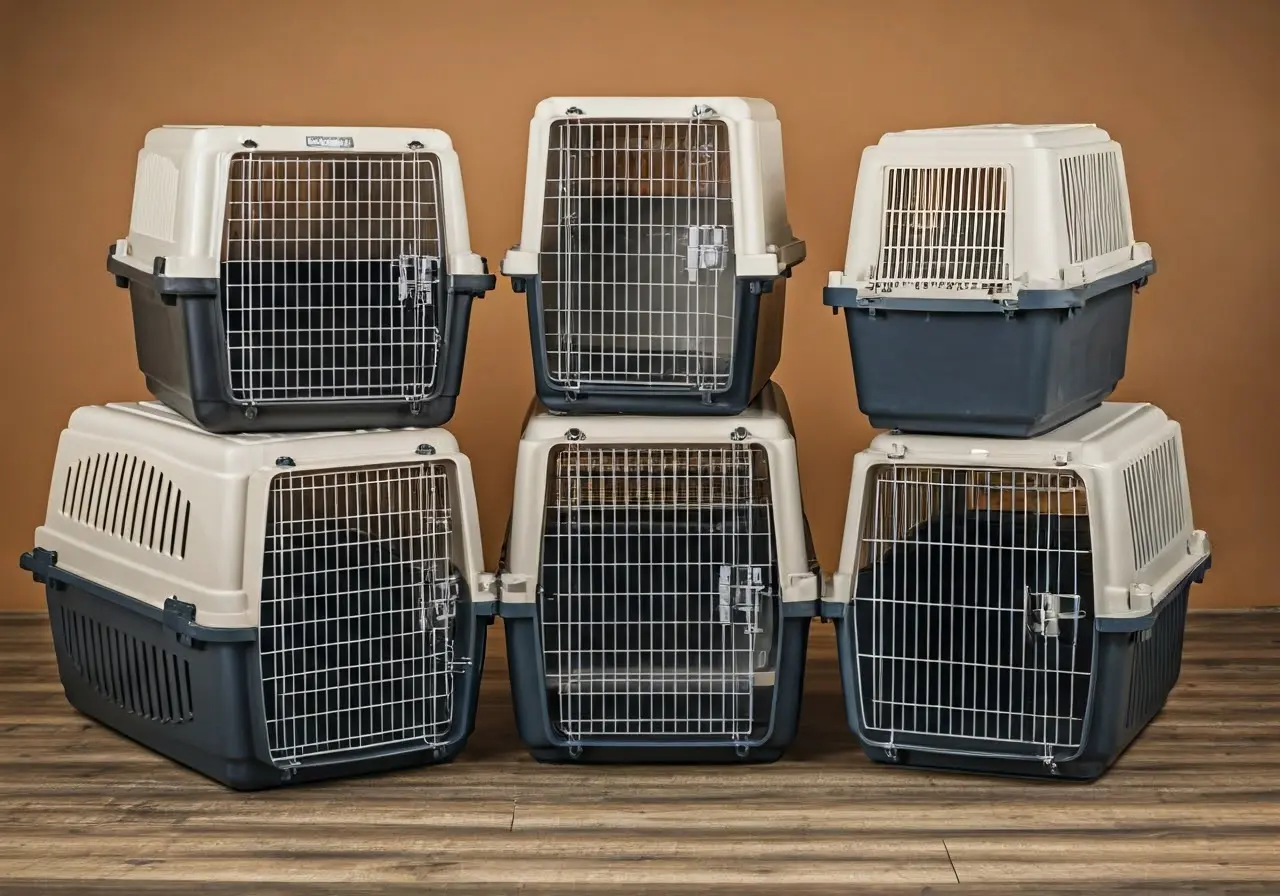Choosing the right crate size for your pet is an important decision that can greatly impact their comfort and happiness. In this blog, we’ll explore some helpful tips to ensure you make the best choice for your furry friend.
1. Understanding Your Pet’s Size and Needs
To select the right crate, start by measuring your pet. Understand their growth potential and specific needs. This will guide you in getting a crate that fits perfectly both now and in the future.
Beyond just length and height, consider your pet’s weight when choosing a crate. Pets, just like us, need space to relax, so giving them the ability to comfortably move or stretch out is essential. Not only does this improve their comfort, but it can also create a safe zone where they feel secure and less stressed.
In addition, age also significantly impacts the type of crate you should choose. Puppies and younger animals tend to grow quickly, so opt for a crate with an adjustable divider. This way, the crate can be expanded as your pet grows, ensuring it remains a cozy and snug environment throughout their development phase.
2. Types of Crates Available
Explore the variety of crates available, from wire, plastic to fabric options. Each has its advantages, so consider your pet’s preferences and your lifestyle when making a choice.
Wire crates are popular for their durability and ventilation. They are perfect for dogs that enjoy seeing their surroundings while also providing plenty of airflow. However, if you travel often, a plastic crate might be your best bet. They’re lightweight, easy to clean, and offer a ‘den-like’ feeling that many pets find comforting on trips.
3. How to Accurately Measure Your Pet
Learn the steps to measure your pet, taking into account their length, height, and natural positions. Accurate measurements ensure the crate will be comfortable and spacious.
Start by measuring your pet while they stand in a normal position. Measure from the tip of their nose to the base of their tail for the length, and from the floor to the top of their head for height. Don’t forget to take into account any unique features, like pointy ears or long tails, that might require a bit more room!
Once you have these measurements, add a few inches to each number as a buffer. This ensures your pet has ample space to shift around, providing comfort for longer periods. Remember, a properly sized crate is not only about fitting your pet but also about ensuring they have room to feel at ease.
4. Factor in Extra Space for Comfort
Ensure there’s enough room for your pet to stand, turn, and lie down comfortably. A little extra space goes a long way in keeping them content.
Extra space, while beneficial, should not be overdone. A crate that’s too large can actually cause anxiety for some pets, as it loses the cozy and secure feel of a smaller, well-fitted space. Striking the right balance is crucial to maintain both comfort and security.
5. Choosing the Right Location
The placement of the crate can affect your pet’s comfort. Choose a quiet, stable location, away from high traffic areas to provide a peaceful environment.
Moreover, avoid areas that are too hot or too cold, like near air vents or direct sunlight. A moderate climate area is ideal, allowing your pet to rest without discomfort from temperature fluctuations.
6. Considering Your Pet’s Activity Level
An active pet might need a more robust crate. Consider this factor to ensure durability and longevity, as well as your pet’s comfort.
Hyperactive pets, particularly those who enjoy bouncing around, may need crates with reinforced joints and locks to withstand their playful energy. Think about a sturdier crate option if your pet has a lively demeanor, as it will provide them with secure play and rest time, regardless of their shenanigans.
7. Assessing Your Pet’s Habits
Observe your pet’s habits and behaviors, such as stretching or curling up, to further refine your crate choice for optimal comfort.
Every pet has their unique set of behaviors—a dog that loves to sprawl may need a longer crate, whereas one that curls up could be content in a snugger space. Taking these habits into account ensures the crate is tailored to their resting preferences and contributes positively to their overall happiness.
8. Incorporating Accessories for Comfort
Enhance the crate with cozy bedding and toys. These accessories can make the crate a more inviting and comfortable place for your pet.
Soft bedding is not just for luxury, it’s essential in making the crate a homely space. Throw in a favorite blanket or a plush pet bed that fits snugly within the crate’s dimensions. Adding a few chew toys or a comforting toy can also keep them engaged and less anxious, especially during crate training.




